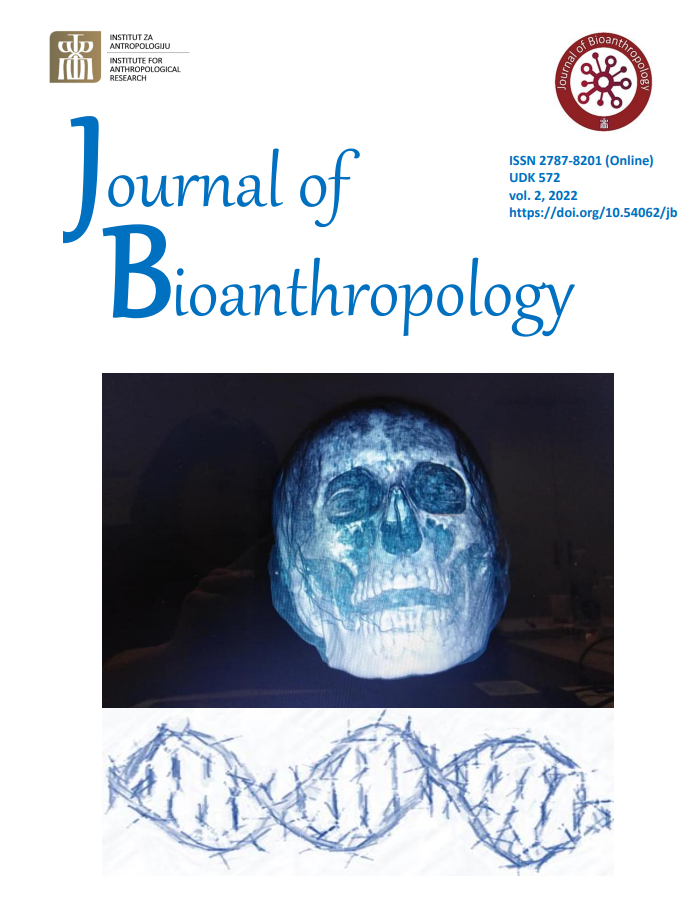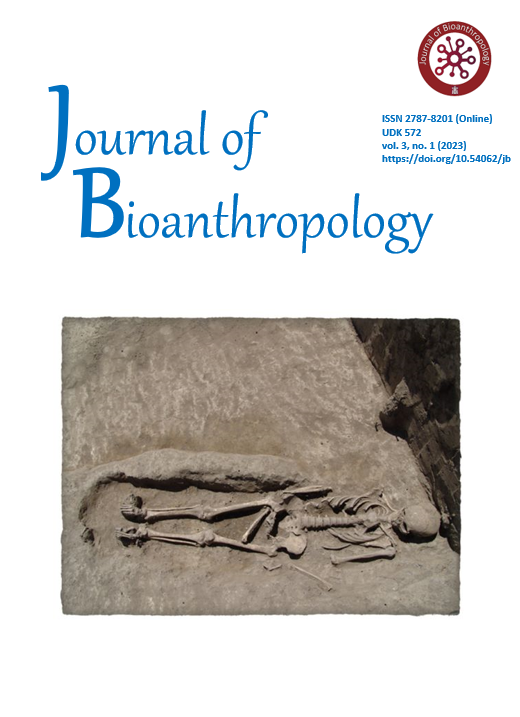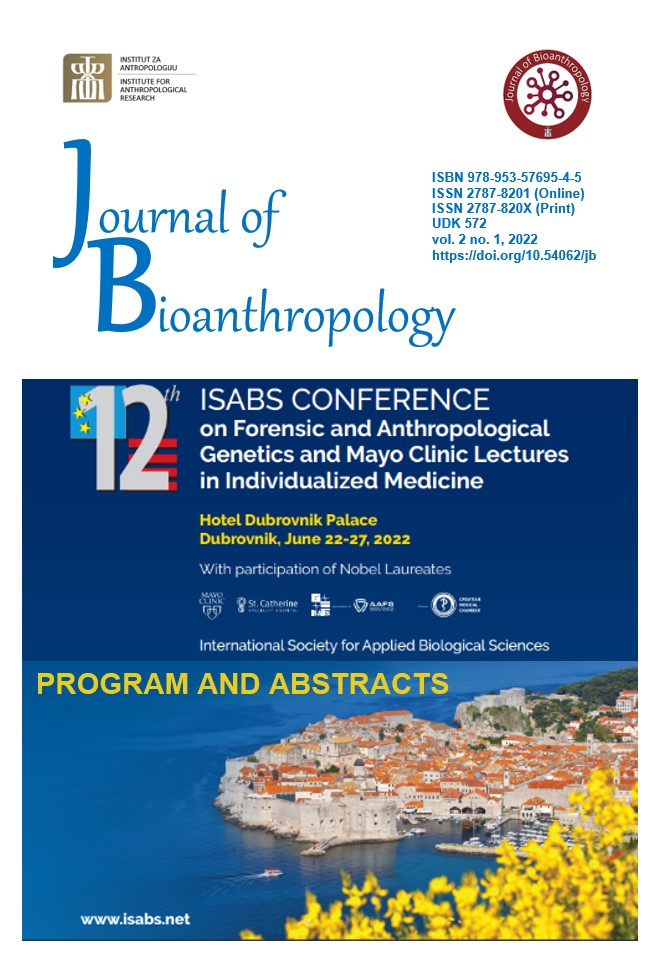Archives
-
Journal of Bioanthropology
Vol. 4 No. 1 (2024)Book of abstracts for ISABS conference.
-

Vol. 2 No. 2 (2022); Journal of Bioanthropology
Journal of Bioanthropology is a multi and interdisciplinary scientific journal that focuses on scientific research in the field of biological anthropology, bioarchaeology, biomechanics, biomedicine, ergonomics, forensics, genetics, human evolution, molecular anthropology, public health and related subjects. The official language of the Journal is English.
All articles published by the Journal of Bioanthropology are made freely and permanently accessible online immediately upon publication, without subscription charges or registration barriers.
Journal of Bioanthropology operates a double-blind peer-review system, where the reviewers do not know the names or affiliations of the authors and the reviewer reports provided to the authors are anonymous. Submitted manuscripts will generally be reviewed by two to three experts who will be asked to evaluate whether the manuscript is scientifically sound and coherent, whether it duplicates already published work, and whether or not the manuscript is sufficiently clear for publication. Reviewers will also be asked to indicate how interesting and significant the research is. The Editors will reach a decision based on these reports and, where necessary, they will consult with members of the Editorial Board.
-

Journal of Bioanthropology
Vol. 1 No. 1 (2021)Here we are! We are celebrating the release of the first issue of our new journal. Journal of Bioanthropology is a multi and interdisciplinary scientific journal that focuses on scientific research in the field of biological anthropology, bioarchaeology, biomechanics, biomedicine, ergonomics, forensics, genetics, human evolution, molecular anthropology, public health and related subjects.
Compared to other scientific disciplines, anthropology boasts a huge number of admirers, who are probably not even aware that since their first significant observation of the environment in childhood they have somehow become amateur bioanthropologists. Namely, by knowing themselves as individuals and individual parts of the body, putting feet in the mouth, sucking a finger, pushing a finger into an eye, ear or nose, each member of Homo sapiens made a small bioanthropological experiment of getting to know the human body. These were certainly the first steps towards gathering bioanthropological knowledge about oneself, but also about the biological characteristics of our species. This is the first step in which man studies himself as a biological object and in which he compares himself with his environment and tries to classify himself in a specific biotype, population, species or, what worries pastors, a race.



